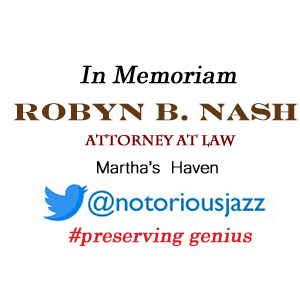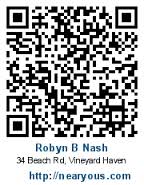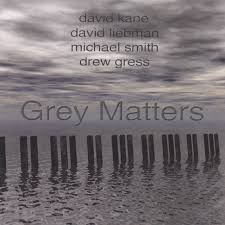
Daily dose Of Jazz…
David Kane was born in Glasgow, Scotland on April 13, 1955 and moved to the United States with his family in 1965. He began playing piano and composing music at the age of eight and went on to attend North Texas State University in 1972. Moving to Washington, D.C. in 1975, he studied with Doctor Asher Zlotnik for five years. In addition, he studied with Ludmila Ulehla, Alan Mandel, and Clare Fischer.
He has performed with Woody Shaw, David Liebman, Marlene VerPlanck, Charlie Byrd, Jim Snidero, Mark Murphy, Eddie Daniels, Dizzy Gillespie, Pam Bricker, Maxine Sullivan, Tom Keenlyside, and Michelle Hendricks. In addition, he has led his jazz quartet featuring drummer Michael S. Smith, saxophonist Glenn Cashman, and bassist Drew Gress.
Kane has accompanied many classical artists including the Twentieth Century Consort, the National Symphony Orchestra, Baltimore Symphony Orchestra, Charlotte Church, Joshua Bell, Renée Fleming, Denyce Graves, and James Galway.
Having composed a variety of chamber works, David is also a prolific composer for film and television for over 30 years with over 250 credits to his name. Most notably, he composed music for the National Geographic Channel, the Smithsonian Channel and for Public Radio International.
From 2006 to 2015, he put on his music critic cap and wrote for Cadence Magazine. In 2021 Jamey Aebersold Jazz published his treatise on improvisation, Playing Outside the Chord. Pianist, composer, arranger, author and music critic David Kane continues to expand his endeavors in music.
More Posts: arranger,bandleader,composer,critic,history,instrumental,jazz,music,piano
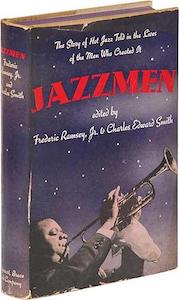
Daily Dose Of Jazz…
Charles Edward Smith was born on June 8, 1904 in Thomaston, Connecticut He began to collect early hot jazz records in the 1920s and worked with William Russell, Eugene Williams, John Hammond, Hugues Panassié and Charles Delaunay in the Hot Record Society. It was from this society that the jazz label HRS Records sprang in 1937 and with Steve Smith he was editor of the jazz magazine Hot Record Society Rag.
With essays in journals such as the Symposium, Daily Worker and Esquire, Charles was among the early jazz critics in the 1930s. Collaborating with Frederic Ramsey he published the book Jazzmen, and, with Wilder Hobson’s American Jazz Music, was one of America’s first jazz books. The latter book included articles on groups like the Austin High School Gang and interviews from early jazz musicians like Willie Cornish, Papa Jack Laine, Leon Roppolo and Nick LaRocca.
Smith and Ramsey argued that then-popular swing was rooted stylistically in blues and traditional jazz. In the course of the research on the book, the interviewed musicians mentioned the name Bunk Johnson again and again. This led to the then-forgotten trumpeter of New Orleans Jazz being rediscovered by Bill Russell in 1942.
With the 1942 Jazz Record Book, an attempt was made to generate a canon of important jazz records, which was later taken up by many other writers, including Marshall Stearns’s The Story of Jazz, Joachim-Ernst Berendt/Günther Huesmann’s jazz book , Barry Kernfeld’s Encyclopedia of Jazz, and Allen Lowe’s That Devilin’ Tune.
Smith also wrote for The New Republic, the magazine Jazz Information, and wrote a series of liner notes for Folkways Records that included Negro folk music, folk blues, early and modern jazz albums. He also wrote the accompaniment text for the LP edition of John Hammond’s Concert Series, From Spirituals to Swing – Carnegie Hall Concerts, 1938/39 on Vanguard Records.
In the opinion of the International Society of Jazz Research, Smith was one of the most important early serious jazz critics, alongside Hugues Panassié, Winthrop Sargeant, Wilder Hobson, Don Knowlton, and Aaron Copland. Jazz author, editor and critic Charles Edward Smith transitioned on December 16, 1970 in New York City.
More Posts: author,critic,editor,history,instrumental,jazz,music
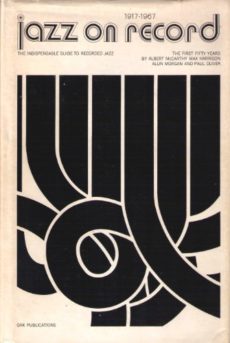
Daily Dose Of Jazz…
Alun Morgan was born on February 24, 1928 in Pontypridd, Wales and became interested in jazz as a teenager during World War II. Charlie Parker was a significant influence on him in the late 1940s.
Morgan began to write on jazz from the early 1950 for Melody Maker, Jazz Journal, Jazz Monthly and Gramophone, and for 20 years from 1969 a weekly jazz column in a local Kent newspaper.
Over his writing career he completed liner notes for over 2,500 albums, initially for Vogue Records. From 1954 he contributed to music programs for BBC Radio. Morgan was the author of a book on modern jazz in England and the co-author of several books on jazz records. They were Jazz On Record: A Critical Guide, Jazz On Record: A Critical Guide To The First 50 years, Modern Jazz-The Essential Records, Modern Jazz – A Survey Of Developments Since 1939, Count Basie, and The Gramophone Jazz Good CD Guide.
He lectured on jazz at the Guildhall School of Music and Drama and the Royal Academy of Music in London, England. Additionally, he was a full-time architect until 1991.
Shortly after retiring from his other occupation, he emigrated to Australia to live out his life. Author and critic Alun Morgan transitioned on November 11, 2018.
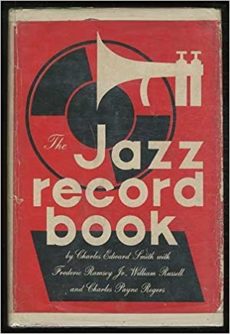
Daily Dose Of Jazz…
Charles Edward Smith was born June 8, 1904 in Thomaston, Connecticut and began collecting Hot Records from early jazz in the 1920s. He worked with William Russell, Eugene Williams, John Hammond, Hugues Panassié and Charles Delaunay in the Hot Record Society from 1937, from which the jazz label HRS Records was established. Along with Steve Smith, he was editor of the jazz magazine Hot Record Society Rag.
Smith was among the early representatives of jazz criticism in the 1930s, having published essays in journals such as the Symposium, The Daily Worker and Esquire. He published the book Jazzmen with Frederic Ramsey in 1939 and was one of America’s first jazz books along with Wild Hobson’s American Jazz Music.
He wrote articles on groups like the Austin High School Gang as well as interviews with early jazz musicians like Willie Cornish, Papa Jack Laine, Leon Roppolo and Nick LaRocca. With the 1942 The Jazz Record Book, an attempt was made to list a canon of important jazz records, which prompted future writers to produce further books such as Marshall Stearns’ The Story of Jazz, Joachim-Ernst Berendt & Günther Huesmann’s Jazz Book, Barry Kernfeld’s Encyclopedia of Jazz and Allen Lowes That Devilin’ Tune.
Charles also wrote for The New Republic, the magazine Jazz Information and a series of liner notes from folk music albums, folk blues and early jazz players such as Pee Wee Russell, Jelly Roll Morton as well as modern jazz musicians Al Cohn, Miles Davis/Milestones, Chico Hamilton/South Pacific in Hi-Fi and J.J. Johnson/Dial JJ 5. He also wrote the accompaniment text for the LP edition of John Hammond’s Concert Series, From Spirituals to Swing – Carnegie Hall Concerts, 1938/39 on the Vanguard label.
Author and critic Charles Edward Smith, who is considered one of the early serious jazz critics, passed away on December 16, 1970 in New York City.
Sponsored By
#preserving genius


